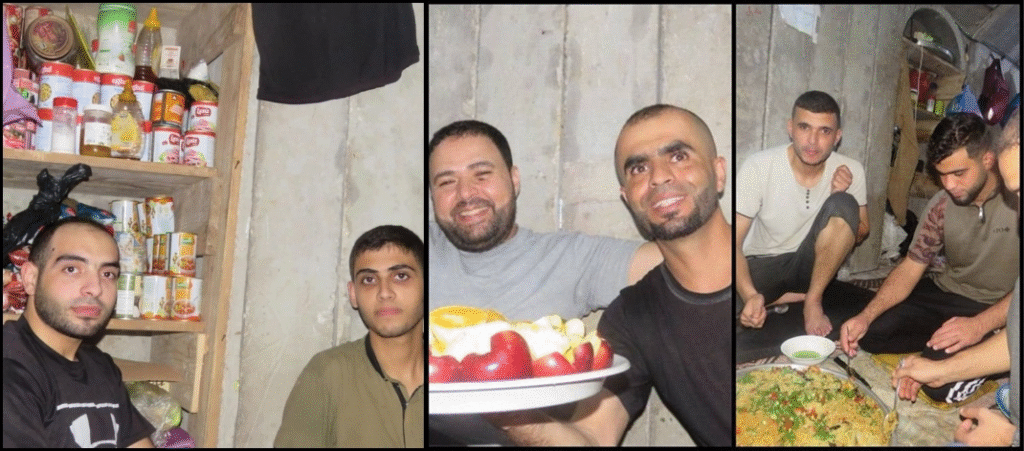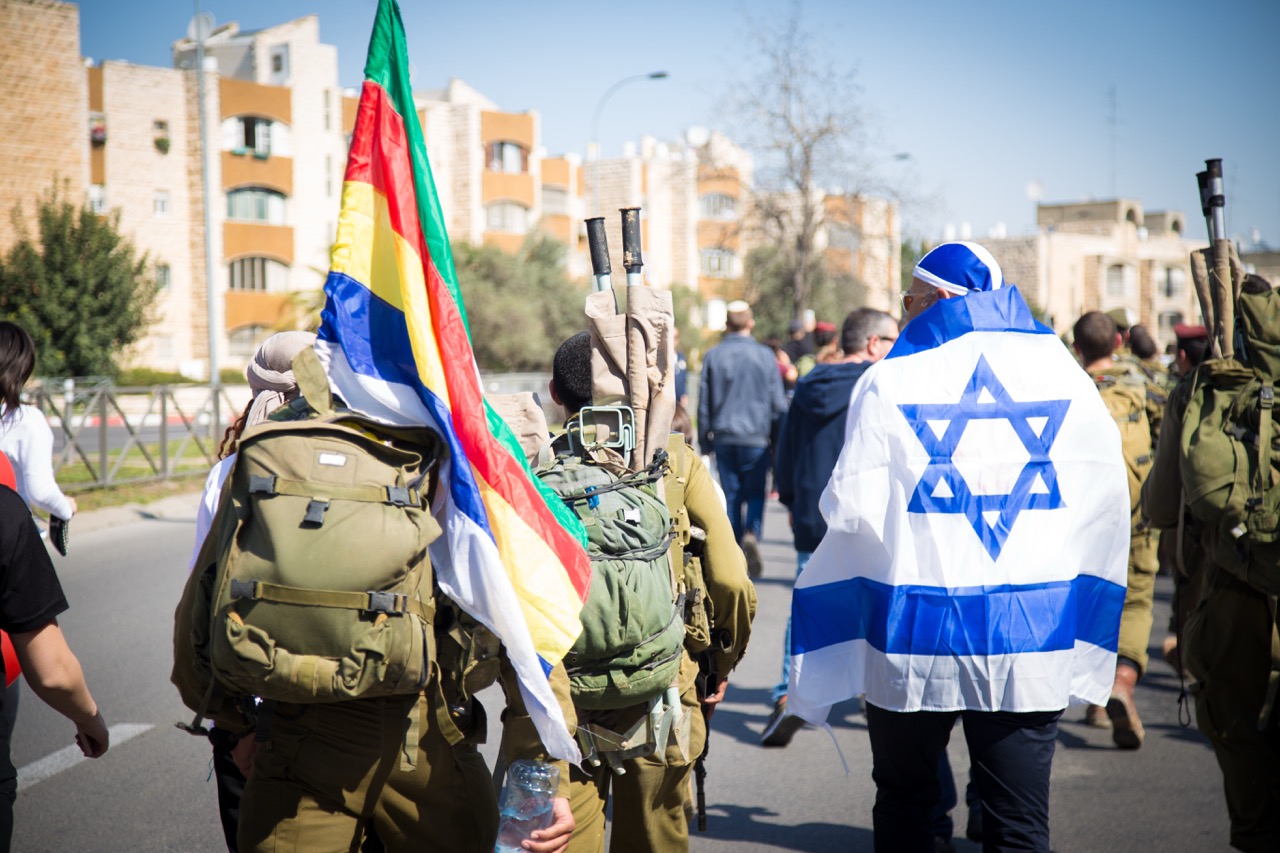A StandWithUs UK Deep Dive
In recent days, the media and social networks have been flooded with claims of famine in Gaza. These are serious allegations relating to some of the gravest violations of the laws of war. To avoid spreading disinformation, it’s crucial to understand the facts and not be misled by unverified information.
In the following Deep Dive, we will present the following findings.
- Definition of famine under international law
- Humanitarian aid distribution to Gaza by the numbers
- No formal famine declaration has been made for Gaza by the IPC, OCHA, or FAO.
- Despite some areas experiencing food shortages caused by Hamas, there is no deliberate starvation in Gaza and no shortage of food available for distribution.
- Humanitarian food aid continues to be delivered, albeit under challenging conditions.
- Hamas launched a famine campaign as part of its efforts to generate international pressure on Israel to withdraw from Gaza while allowing Hamas to remain in power.
- As part of this campaign, Hamas is also cynically exploiting sick and disabled children, portraying them as if they are starving.
- Hamas and the UN has parallel Interests in undermining independent aid models

1. Definition of Famine Under International Law
Under the Integrated Food Security Phase Classification (IPC), famine is defined as occurring only when all three of the following criteria are met:
- At least 20 percent of the population face extreme food shortages with a complete lack of means to access food.
- At least 30 percent of children suffer from acute malnutrition.
- There are at least two deaths per 10,000 people per day from starvation or nutrition-related disease.
These conditions must be confirmed by independent data assessments and field verifications carried out by recognised humanitarian bodies such as the United Nations Office for the Coordination of Humanitarian Affairs (OCHA), the Food and Agriculture Organisation (FAO), and other IPC-partnered agencies.
2. Humanitarian Aid Distribution: By the Numbers
During the ceasefire at the beginning of 2025, Israel focused on shipping in huge amounts of aid. By the end of March, Israeli estimates stated that over 500,000 tonnes of aid had been delivered via approximately 40,000 trucks. That equalled to over 3000 calories per person until the end of July.
Israel is not obliged by any law to distribute humanitarian aid across Gaza. That responsibility lies with humanitarian agencies, primarily led by the United Nations.
Furthermore, the UN has a duty to ensure that it is not diverting humanitarian aid to Hamas, a proscribed terrorist organisation by numerous governments and international bodies, including the United States, United Kingdom, European Union, Canada, Australia, New Zealand, Switzerland, Paraguay, Japan etc.
Israel had found that Hamas was exploiting the UN aid trucks, stealing the contents, and selling them on the black market at a high rate.
During the months of April and May, the US and Israel sought alternative aid distribution models.
See below an infographic presenting how Hamas had exploited aid in Gaza for many years.

In May 2025, the Gaza Humanitarian Fund, a US aid-delivery organisation, received the contract to be responsible for aid delivery in Gaza.
Total Aid Delivered to Date by GHF:
- 1,583,416 food boxes
- 94,904,442 meals
The GHF has repeatedly called for other agencies to support its efforts to avert a humanitarian crisis in Gaza. One would expect the UN agencies based in Gaza to stay true to their core mission of providing aid to those who need it in war zones.
However, that has not happened. UN agencies were refusing to distribute the aid as they demanded exclusivity to this mission. These agencies do not wish to cooperate with the GHF and have allowed truckloads of aid to continue piling up at the Kerem Shalom border crossing, all whilst allowing a crisis of food distribution to worsen.
Towards the end of July, the IDF published footage showing over 950 truckloads worth of aid that had been sitting at the Kerem Shalom border crossing, with no UN agency having picked them up.
Aid waiting to be collected by the UN at the Kerem Shalom Gaza border crossing.
3. Caloric Intake and Legal Thresholds
Each distributed meal is designed to contribute to the standard minimum caloric requirement of 2,100 kilocalories per person per day, as established by the World Health Organisation. Based on the scale and frequency of food deliveries, current operations are intended to meet the emergency nutrition needs of a significant portion of the civilian population.
Despite some areas experiencing food shortages caused by Hamas, there is no deliberate starvation in Gaza and no shortage of food available for distribution, No available data shows that mass starvation is occurring at the level required to meet the IPC definition of famine as of the date of this report.
4. Legal Observations and Ongoing Monitoring
- No formal famine declaration has been made for Gaza by the IPC, OCHA, or FAO.
- Humanitarian food aid continues to be delivered, albeit under challenging conditions.
The current evidence, including the scale of food aid distribution and the absence of mass mortality data, does not support a legal classification of famine in Gaza at this time.
5. Famine Campaign
There is growing evidence that Hamas has launched a coordinated campaign to create a false narrative of deliberate famine in Gaza.
Hamas wants to fuelling international attention and increasing global pressure on Israel, while also endangering Israelis and Jewish communities worldwide.
- Obstructing aid operations, including targeting the Gaza Humanitarian Fund’s (GHF) efforts, due to the independent nature of its delivery model, which bypasses militant control and ensures food reaches civilians directly.
- Seizing or redirecting aid intended for civilians, including food and fuel, for use in Hamas military operations or as leverage to increase civilian dependency. These actions may constitute a violation of international humanitarian law, including Article 54 of Protocol I to the Geneva Conventions, which prohibits the use of starvation of civilians as a method of warfare, and may amount to the war crime of using starvation as a weapon.
- Staging incidents to falsely accuse Israeli forces of targeting civilians near aid convoys, when in several documented instances, Hamas operatives were responsible for initiating gunfire. Hamas is also cynically using sick and disabled children who suffers from degenerative disease, presenting them as if they are starving. Despite this, photos were widely shared by major media outlets including The New York Times, NBC News, The Guardian, and BBC. None of them bothered to verify the context before publishing and none seem interested in correcting the narrative.



Check out this link of Hamas fighters eating while their own people are suffering:

6. Two weeks ago we were close to a deal, so why is the issue of starvation suddenly the main story?
There is mounting evidence to suggest that Hamas is actively pushing a narrative of famine for strategic reasons:
- Leveraging humanitarian suffering to increase international pressure on Israel to agree to a ceasefire deal that is politically and militarily disadvantageous to Israel.
- Creating a false perception of mass starvation to fuel diplomatic isolation of Israel and divert attention from Hamas’ own obstruction of humanitarian relief operations.
- Discrediting independent aid bodies such as the Gaza Humanitarian Fund (GHF), which operates outside Hamas control and exposes interference in food delivery and distribution.
- These tactics represent a broader pattern where civilian suffering is instrumentalised as part of psychological and information warfare. Misrepresenting humanitarian data to influence negotiations could potentially amount to manipulation of protected civilian status under international humanitarian law.
- It’s working— the world is falling for it. This strategy has gained traction, as international attention increases on the humanitarian plight in the region, influencing global perceptions and actions, as well as endangering Israelis and Jews worldwide.
Click here to see Hamas propaganda videos promoting the famine lie: https://www.instagram.com/reel/DMqSbeXMTyz/?utm_source=ig_web_copy_link&igsh=MTd5M2JkNWltZmR2dw==
7. Alignment of Interests Between Hamas and UN Agencies
United Nations agencies, including the World Food Programme (WFP) and UNRWA, continue to deliver limited humanitarian aid into Gaza. These operations have been significantly reduced due to ongoing security risks, lack of access, and increasing interference from armed groups.
Despite these constraints, UN agencies have not withdrawn entirely and continue to position themselves as central humanitarian actors in Gaza. However, their logistical and political dependency on Hamas-controlled areas raises critical concerns about operational independence and accountability.
Click here to see the difference between UN aid distribution and Israeli-US backed GHF: https://www.instagram.com/reel/DMr_cEusdsC/?utm_source=ig_web_copy_link&igsh=MTQzcTBieWN5Z254Zw==
Parallel Interests in Undermining Independent Aid Models
The emergence of the Gaza Humanitarian Fund (GHF) and other non-UN, non-Hamas-affiliated aid mechanisms has created tensions on the ground. These models aim to deliver aid directly to civilians with transparency and without interference.
Both Hamas and certain UN actors have shown resistance to these independent efforts, albeit for different reasons:
- Hamas views GHF as a threat because it operates outside its control, denying the group the ability to loot, redirect or politicise aid.
- UN agencies view GHF as competition, undermining their monopoly over humanitarian legitimacy and funding. Without exclusive access and recognition, their influence and relevance are diminished.
The result is a converging interest between a terrorist organisation and parts of the UN system to undermine the success of independent humanitarian channels, despite their proven efficiency and impartiality.
In a briefing with international journalists on July 23rd 2025, the IDF said that it offered the UN to escort their trucks with humanitarian aid inside Gaza but the offer was turned down.
Instead, the UN wanted to be escorted by “blue police” in Gaza, which is run by Hamas, the military official said.
Documented Exploitation of UN Aid by Hamas
Multiple credible reports and testimonies have revealed that Hamas has looted aid from UN convoys, diverted food and fuel, and used UN vehicles for its own military and propaganda operations. This includes:
- Confiscation of aid supplies intended for civilians
- Misuse of UN facilities for storage of weapons or as shields during combat
- Publicly blaming Israel for shortages, despite Hamas itself obstructing the aid flow or staging attacks near distribution points
Watch footage of Hamas terrorists stealing aid from a UN truck: https://videoidf.azureedge.net/3f4a5458-4c95-4e8d-a658-51e5f8757a7c
Despite this, UN agencies have largely continued operations with minimal public condemnation of Hamas, raising concerns about their neutrality and transparency. Furthermore, as a part of any ceasefire agreement with Israel, Hamas demands that aid only be delivered and distributed by the United Nations; as reported by the Wall Street Journal. This begs the question: Why does Hamas want the United Nations to distribute aid to the Palestinians? The answer is: The UN and Hamas have a shared interest.




